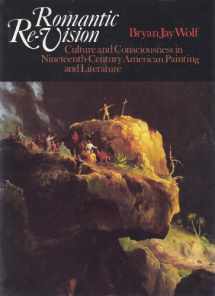
Romantic Re-Vision
Book details
Summary
Description
As its title suggests, Romantic Re-vision is "revisionary" in intent. Bryan Jay Wolf seeks to revise our understanding of the nature of American Romantic painting - its remarkable complexity, modernity, and expressive power - and to help redefine the enterprise of criticism so as to recapture that artistic heritage. Wolf calls into question the traditional view that nineteenth-century American painting was primarily concerned with the representation of nature. He suggests that the artists of the period were instead engaged in a "dialectic of consciousness with itself" in which nature is made to serve the ends of consciousness but is never itself an end. Romanticism, he argues, is thus an instance of early modernism and must be understood within the context of those concerns that characterize the contemporary language and semiotics, artistic identity-formation, and self-referentiality. Though he concentrates on the works of Washington Allston, John Quidor, and Thomas Cole, Wolf shows the coherence of the whole of nineteenth-century American culture by continually relating these works to social and political developments and to crucial writings by such major figures of the period as Emerson, Irving, and Hawthorne. Wolf also considers the implications of his findings for Romanticism generally; Kant, Burke, Mitlon, Coleridge, Keats, and Friedrich are all basic points of reference throughout his study. Wolf draws on recent theories of the sublime in literary criticism as well as on Freud and Lacan to explore both paintings and literary works as texts, formal systems of signs and images that not only reflect but constitute the culture from which they arise...


We would LOVE it if you could help us and other readers by reviewing the book
Book review



